- Home
- Salman Rushdie
Step Across This Line Page 2
Step Across This Line Read online
Page 2
It is out of this grayness—the gathering, cumulative grayness of that bleak world—that calamity comes. The tornado is the grayness gathered together and whirled about and unleashed, so to speak, against itself. And to all this the film is astonishingly faithful, shooting the Kansas scenes in what we call black-and-white but what is in reality a multiplicity of shades of gray, and darkening its images until the whirlwind sucks them up and rips them into pieces.
There is, however, another way of understanding the tornado. Dorothy has a surname: Gale. And in many ways Dorothy is the gale blowing through this little corner of nowhere. She demands justice for her little dog while the adults give in meekly to the powerful Miss Gulch. She is prepared to interrupt the gray inevitability of her life by running away but is so tenderhearted that she runs back again when Professor Marvel tells her that Auntie Em is distraught that she has fled. Dorothy is the life-force of this Kansas, just as Miss Gulch is the force of death; and perhaps it is Dorothy’s turmoil, the cyclone of feeling unleashed by the conflict between Dorothy and Miss Gulch, that is made actual in the great dark snake of cloud that wriggles across the prairie, eating the world.
The Kansas of the film is a little less unremittingly bleak than that of the book, if only because of the introduction of the three farmhands and of Professor Marvel, four characters who will find their rhymes, their counterparts, in the Three Companions of Oz and the Wizard himself. Then again, the movie Kansas is also more terrifying, because it adds a presence of real evil: the angular Miss Gulch, with a profile that could carve a turkey, riding stiffly on her bicycle with a hat on her head like a plum pudding or a bomb, and claiming the protection of the Law for her campaign against Toto. Thanks to Miss Gulch, this cinematic Kansas is informed not only by the sadness of dirt-poverty but also by the badness of would-be dog murderers.
And this is the home that there’s no place like? This is the lost Eden that we are asked to prefer (as Dorothy does) to Oz?
I remember (or I imagine I remember) that when I first saw this film, Dorothy’s place struck me as being pretty much a dump. I was lucky, and had a good, comfortable home, and so, I reasoned to myself, if I’d been whisked off to Oz, I’d naturally want to get home again. But Dorothy? Maybe we should invite her over to stay. Anywhere looks better than that.
I thought one further thought, which I had better confess now, as it gave me a sneaking regard for Miss Gulch and her fantasy counterpart, the Wicked Witch, and, some might say, a secret sympathy for all persons of her witchy disposition, which has remained with me ever since: I couldn’t stand Toto. I still can’t. As Gollum says of the hobbit Bilbo Baggins in another great fantasy: “Baggins: we hates it to pieces.”
Toto, that little yapping hairpiece of a creature, that meddlesome rug! L. Frank Baum, excellent fellow, gave the dog a distinctly minor role: it kept Dorothy happy, and when she was not, it had a tendency to “whine dismally”—not an endearing trait. Its only significant contribution to Baum’s story came when it accidentally knocked over the screen behind which the Wizard of Oz was concealed. The film-Toto rather more deliberately pulls aside a curtain to reveal the Great Humbug, and in spite of everything I found this an irritating piece of mischief-making. I was not surprised to learn that the pooch playing Toto was possessed of a star’s temperament, and even brought the shoot to a standstill at one point by staging a nervous breakdown. That Toto should be the film’s one true object of love has always rankled. But such protest is useless, if satisfying. Nobody, now, can rid me of this turbulent toupee.
When I first saw The Wizard of Oz it made a writer of me. Many years later, I began to devise the yarn that eventually became Haroun and the Sea of Stories. I felt strongly that—if I could only strike the right note—it must be possible to write the tale in such a way as to make it of interest to adults as well as children. The world of books has become a severely categorized and demarcated place, in which children’s fiction is not only a kind of ghetto but one subdivided into writing for a number of different age-groups. The movies, however, have regularly risen above such categorizing. From Spielberg to Schwarzenegger, from Disney to Gilliam, the cinema has often come up with offerings before which kids and adults sit happily side by side. I watched Who Framed Roger Rabbit in an afternoon movie theater full of excited, rowdy children and went back to see it the next evening, at an hour too late for the kids, so that I could hear all the gags properly, enjoy the movie in-jokes, and marvel at the brilliance of the Toontown concept. But of all movies, the one that helped me most as I tried to find the right voice for Haroun was The Wizard of Oz. The film’s influence is there in the text, plain to see. In Haroun’s companions there are clear echoes of the friends who danced with Dorothy down the Yellow Brick Road.
And now I’m doing something strange, something that ought to destroy my love for the movie but doesn’t: I’m watching a videotape with a notebook on my lap, a pen in one hand and a remote-control zapper in the other, subjecting The Wizard of Oz to the indignities of slow-motion, fast-forward, and freeze-frame, trying to learn the secret of the magic trick; and, yes, seeing things I’d never noticed before . . .
The film begins. We are in the monochrome “real” world of Kansas. A girl and her dog run down a country lane. She isn’t coming yet, Toto. Did she hurt you? She tried to, didn’t she? A real girl, a real dog, and the beginning, with the very first line of dialogue, of real drama. Kansas, however, is not real, no more real than Oz. Kansas is a painting. Dorothy and Toto have been running down a short stretch of “road” in the MGM studios, and this shot has been matted into a picture of emptiness. “Real” emptiness would probably not look empty enough. It’s as close as makes no difference to the universal gray of Frank Baum’s story, the void broken only by a couple of fences and the vertical lines of telegraph poles. If Oz is nowhere, then the studio setting of the Kansas scenes suggests that so is Kansas. This is necessary. A realistic depiction of the extreme poverty of Dorothy Gale’s circumstances would have created a burden, a heaviness, that would have rendered impossible the imaginative leap into Storyland, the soaring flight into Oz. The Grimms’ fairy tales, it’s true, were often realistic. In “The Fisherman and His Wife,” the eponymous couple live, until they meet the magic flounder, in what is tersely described as “a pisspot.” But in many children’s versions of the Grimms, the pisspot is bowdlerized into a “hovel” or some even gentler word. Hollywood’s vision has always been of this soft-focus variety. Dorothy looks extremely well fed, and she is not really, but unreally, poor.
She arrives at the farmyard, and here (freezing the frame) we see the beginning of what will be a recurring visual motif. In the scene we have frozen, Dorothy and Toto are in the background, heading for a gate. To the left of the screen is a tree trunk, a vertical line echoing the telegraph poles of the scene before. Hanging from an approximately horizontal branch are a triangle (for calling farmhands to dinner) and a circle (actually a rubber tire). In mid-shot are further geometric elements: the parallel lines of the wooden fence, the bisecting diagonal wooden bar at the gate. Later, when we see the house, the theme of simple geometry is present once again; it is all right angles and triangles. The world of Kansas, that great void, is shaped into “home” by the use of simple, uncomplicated shapes; none of your citified complexity here. Throughout The Wizard of Oz, home and safety are represented by such geometrical simplicity, whereas danger and evil are invariably twisty, irregular, and misshapen.
The tornado is just such an untrustworthy, sinuous, shifting shape. Random, unfixed, it wrecks the plain shapes of that no-frills life.
The Kansas sequence invokes not only geometry but mathematics too. When Dorothy, like the chaotic force she is, bursts upon Auntie Em and Uncle Henry with her fears about Toto, what are they doing? Why do they shoo her away? “We’re trying to count,” they admonish her, as they take a census of the eggs, counting their metaphorical chickens, their small hopes of income, which the tornado will shortly blow away. So, with simpl
e shapes and numbers, Dorothy’s family erects its defenses against the immense, maddening emptiness; and these defenses are useless, of course.
Leap ahead to Oz and it becomes obvious that this opposition between the geometric and the twisty is no accident. Look at the beginning of the Yellow Brick Road: it’s a perfect spiral. Look again at Glinda’s carriage, that perfect, luminous sphere. Look at the regimented routines of the Munchkins as they greet Dorothy and thank her for squashing the Wicked Witch of the East. Move on to the Emerald City: see it in the distance, its straight lines soaring into the sky! And now, by contrast, observe the Wicked Witch of the West: her bent figure, her misshapen hat. How does she depart? In a puff of shapeless smoke . . . “Only bad witches are ugly,” Glinda tells Dorothy, a remark of high political incorrectness that emphasizes the film’s animosity toward whatever is tangled, claw-crooked, and weird. Woods are invariably frightening—the gnarled branches of trees are capable of coming to life—and the one moment when the Yellow Brick Road itself bewilders Dorothy is the moment when it ceases to be geometric (first spiral, then rectilinear) and splits and forks every which way.
Back in Kansas, Auntie Em is delivering the scolding that is the prelude to one of the cinema’s immortal moments. You always get yourself into a fret about nothing . . . find yourself a place where you won’t get into any trouble!
Some place where there isn’t any trouble. Do you suppose there is such a place, Toto? There must be. Anybody who has swallowed the scriptwriters’ notion that this is a film about the superiority of “home” over “away,” that the “moral” of The Wizard of Oz is as sickly-sweet as an embroidered sampler—“East, West, home’s best”—would do well to listen to the yearning in Judy Garland’s voice as her face tilts up toward the skies. What she expresses here, what she embodies with the purity of an archetype, is the human dream of leaving, a dream at least as powerful as its countervailing dream of roots. At the heart of The Wizard of Oz is the tension between these two dreams; but as the music swells and that big, clean voice flies into the anguished longings of the song, can anyone doubt which message is the stronger? In its most potent emotional moment, this is unarguably a film about the joys of going away, of leaving the grayness and entering the color, of making a new life in the “place where there isn’t any trouble.” “Over the Rainbow” is, or ought to be, the anthem of all the world’s migrants, all those who go in search of the place where “the dreams that you dare to dream really do come true.” It is a celebration of Escape, a grand paean to the uprooted self, a hymn—the hymn—to Elsewhere.
E. Y. Harburg, the lyricist of “Brother, Can You Spare a Dime?” and Harold Arlen, who had written “It’s Only a Paper Moon” with Harburg, made the songs for The Wizard of Oz, and Arlen actually did think of the melody line outside Schwab’s drugstore in Hollywood. Aljean Harmetz records Harburg’s disappointment with the music: too complex for a sixteen-year-old to sing, too advanced by comparison with Disney hits like “Heigh Ho! Heigh Ho! It’s Off to Work We Go.” Harmetz adds: “To please Harburg, Arlen wrote the melody for the tinkling middle section of the song.” Where troubles melt like lemon drops / Away above the chimney tops / That’s where you’ll find me . . . A little higher up, in short, than the protagonist of that other great ode to flight, “Up on the Roof.”
That “Over the Rainbow” came close to being cut out of the movie is well known, and proof that Hollywood makes its masterpieces by accident, because it doesn’t really know what it is doing. Other songs were dropped: “The Jitter Bug,” after five weeks’ filming, and almost all of “Lions and Tigers and Bears,” which survives only as the chant of the Companions as they pass through the forest along the Yellow Brick Road: Lions and Tigers and Bears—oh, my! It’s impossible to say if the film would have been improved or damaged by the addition of these songs; would Catch-22 be Catch-22 if it had been published under its original title of Catch-18? What we can say, however, is that Yip Harburg (no admirer of Judy) was wrong about Garland’s voice.
The principal actors in the cast complained that there was “no acting” in the movie, and in the conventional sense they were right. But Garland singing “Over the Rainbow” did something extraordinary. In that moment she gave the film its heart. The force of her rendition is strong and sweet and deep enough to carry us through all the tomfoolery that follows, even to bestow a touching quality upon it, a vulnerable charm that is matched only by Bert Lahr’s equally extraordinary interpretation of the role of the Cowardly Lion.
What is left to say about Garland’s Dorothy? The conventional wisdom is that the performance gains in ironic force because its innocence contrasts so starkly with what we know of the actress’s difficult later life. I’m not sure this is right, though it’s the kind of remark movie buffs like making. It seems to me that Garland’s performance succeeds on its own terms, and on the film’s. She is required to pull off what sounds like an impossible trick. On the one hand she is to be the film’s tabula rasa, the blank slate upon which the action of the story gradually writes itself—or rather, because this is a movie, after all, the blank screen upon which the action plays. Armed only with her look of wide-eyed innocence, she must be the object of the film as well as its subject, must allow herself to be the empty vessel that the movie slowly fills. And yet, on the other hand, she must—with a little help from the Cowardly Lion—carry the entire emotional weight, the whole cyclonic force of the film. That she achieves this is due not only to the mature depths of her singing voice but also to the odd stockiness, the physical gaucherie that endears us precisely because it is half unbeautiful, jolie-laide, instead of the posturing prettiness Shirley Temple would have brought to the role—and Temple was seriously considered for the part. The scrubbed, ever so slightly lumpy unsexiness of Garland’s playing is what makes the movie work. One can only imagine the catastrophic flirtatiousness young Shirley would have insisted on employing, and be grateful that the MGM executives were persuaded to go with Judy.
The tornado that I’ve suggested is the product of the Gale in Dorothy’s name was actually made of muslin stiffened with wire. A props man had to lower himself into the muslin tunnel to help pull the needles through and push them out again. “It was pretty uncomfortable when we reached the narrow end,” he confessed. The discomfort was worth it, because that tornado, swooping down on Dorothy’s home, creates the second genuinely mythic image of The Wizard of Oz: the archetypal myth, one might say, of moving house.
In this, the transitional sequence of the movie, when the unreal reality of Kansas gives way to the realistic surreality of the world of wizardry, there is, as befits a threshold moment, much business involving windows and doors. First, the farmhands open up the doors of the storm shelter, and Uncle Henry, heroic as ever, persuades Auntie Em that they can’t afford to wait for Dorothy. Second, Dorothy, returning with Toto from her attempt at running away, struggles against the wind to open the screen door of the main house; this outer door is instantly ripped from its hinges and blows away. Third, we see the others closing the doors of the storm shelter. Fourth, Dorothy, inside the house, opens and shuts the doors of various rooms, calling out frantically for Auntie Em. Fifth, Dorothy goes to the storm shelter, but its doors are locked against her. Sixth, Dorothy retreats back inside the main house, her cries for Auntie Em now weak and fearful; whereupon a window, echoing the screen door, blows off its hinges and knocks her cold. She falls upon the bed, and from now on magic reigns. We have passed through the film’s most important gateway.
This device—the knocking out of Dorothy—is the most radical and in some ways the worst of all the changes wrought to Frank Baum’s original conception. For in the book there is no question that Oz is real, that it is a place of the same order, though not of the same type, as Kansas. The film, like the TV soap opera Dallas, introduces an element of bad faith when it permits the possibility that everything that follows is a dream. This type of bad faith cost Dallas its audience and eventually killed it off. That The Wi
zard of Oz avoided the soap opera’s fate is a testament to the general integrity of the film, which enabled it to transcend this hoary cliché.
While the house flies through the air, looking in longshot like a tiny toy, Dorothy “awakes.” What she sees through the window is a sort of movie—the window acts as a cinema screen, a frame within the frame—which prepares her for the new sort of movie she is about to step into. The effect shots, sophisticated for their time, include a lady knitting in her rocking chair as the tornado whirls her by, a cow standing placidly in the eye of the storm, two men rowing a boat through the twisting air, and, most important of all, the figure of Miss Gulch on her bicycle, which transforms, as we watch it, into the figure of the Wicked Witch of the West on her broomstick, her cape flying out behind her, and her huge cackling laugh rising above the noise of the storm.
The house lands. Dorothy emerges from her bedroom with Toto in her arms. We have reached the moment of color.
The first color shot, in which Dorothy walks away from the camera toward the front door, is deliberately dull, to match the preceding monochrome. But once the door is open, color floods the screen. In these color-glutted days it’s hard to imagine a time when color films were still relatively new. Thinking back once again to my Bombay childhood in the 1950s, when Hindi movies were all in black-and-white, I can recall the excitement of the advent of color. In an epic about the Grand Mughal, the emperor Akbar, entitled Mughal-e-Azam, there was only one reel of color cinematography, featuring a dance at court by the fabled Anarkali. Yet this reel alone guaranteed the film’s success, drawing in the crowds by the million.

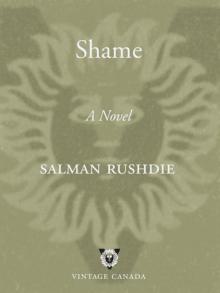 Shame
Shame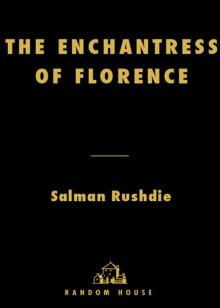 The Enchantress of Florence
The Enchantress of Florence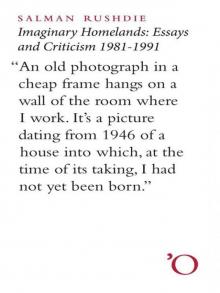 Imaginary Homelands: Essays and Criticism 1981-1991
Imaginary Homelands: Essays and Criticism 1981-1991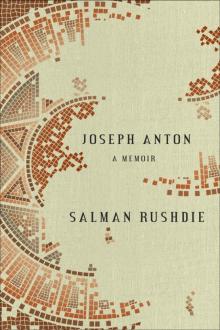 Joseph Anton: A Memoir
Joseph Anton: A Memoir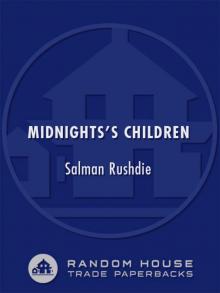 Midnight's Children
Midnight's Children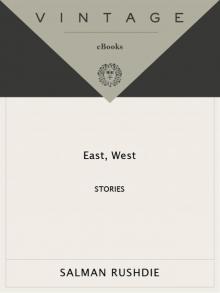 East, West: Stories
East, West: Stories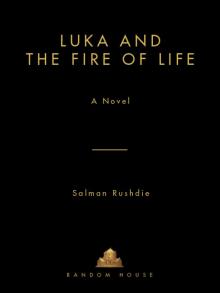 Luka and the Fire of Life
Luka and the Fire of Life Fury Fury Fury
Fury Fury Fury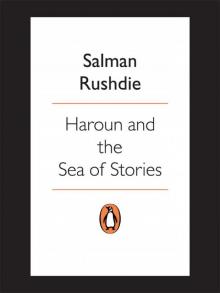 Haroun and the Sea of Stories
Haroun and the Sea of Stories Step Across This Line: Collected Nonfiction 1992-2002
Step Across This Line: Collected Nonfiction 1992-2002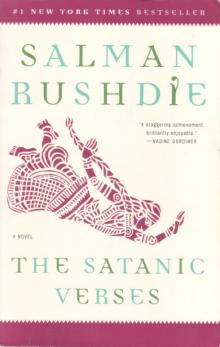 The Satanic Verses
The Satanic Verses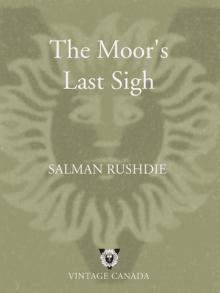 The Moor's Last Sigh
The Moor's Last Sigh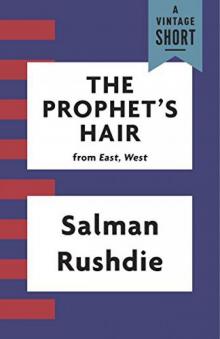 The Prophet's Hair
The Prophet's Hair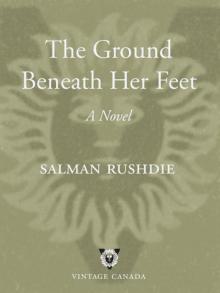 The Ground Beneath Her Feet
The Ground Beneath Her Feet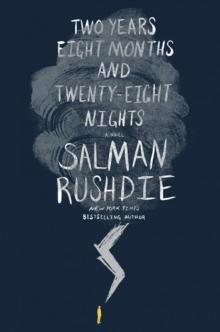 Two Years Eight Months and Twenty-Eight Nights
Two Years Eight Months and Twenty-Eight Nights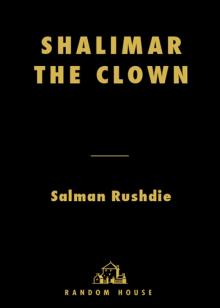 Shalimar the Clown
Shalimar the Clown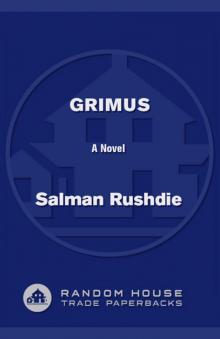 Grimus
Grimus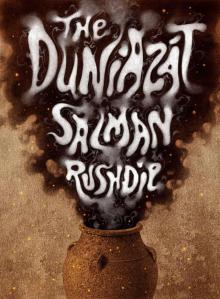 The Duniazát
The Duniazát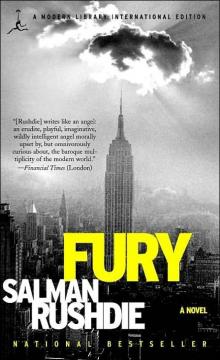 Fury
Fury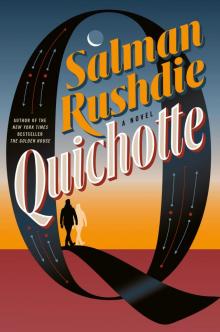 Quichotte
Quichotte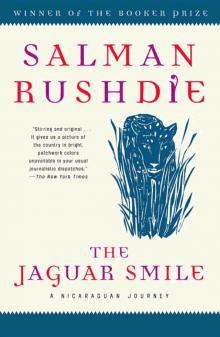 The Jaguar Smile
The Jaguar Smile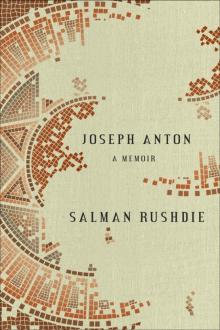 Joseph Anton
Joseph Anton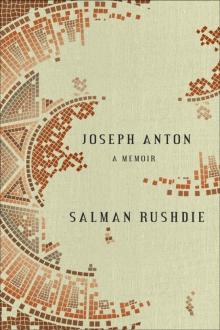 Joseph Anton: A Memoir: A Memoir
Joseph Anton: A Memoir: A Memoir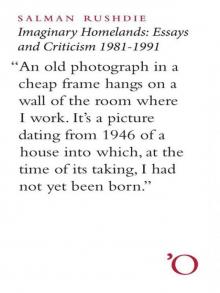 Imaginary Homelands
Imaginary Homelands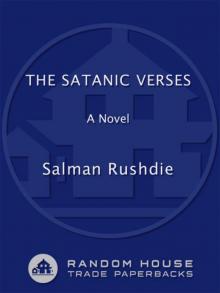 The Satanic Verses: A Novel
The Satanic Verses: A Novel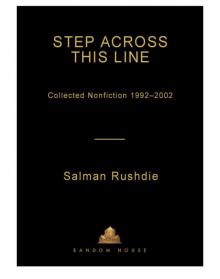 Step Across This Line
Step Across This Line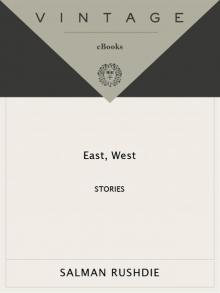 East, West
East, West